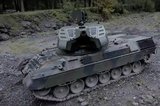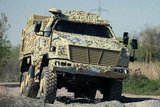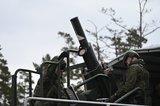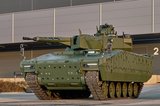What a Trump victory could mean for the defence industry
The incoming administration has said it would invest in air defence capabilities. (Photo: US Army)
The expected victory of Donald Trump for a second term as US president will undoubtedly have a huge impact on the national defence industry. During his campaign, Trump claimed that investments in military capabilities and production capacities would increase to overmatch China, Russia and other peer adversaries were he to beat Democratic Party candidate Kamala Harris.
“We want a strong and powerful military and, ideally, we don’t have to use it,” Trump said during a speech to his supporters in West Palm Beach, Florida, on 6 November, after being named as the projected winner of the 2024 presidential election by
Already have an account? Log in
Want to keep reading this article?
More from Land Warfare
-
![The British Army’s Land Mobility Programme – all change but no progress?]()
The British Army’s Land Mobility Programme – all change but no progress?
The UK’s Land Mobility Programme, an effort to replace thousands of British Army vehicles, may be about to undergo a radical change in direction.
-
![Supacat and KNDS join forces for British Army vehicle programme]()
Supacat and KNDS join forces for British Army vehicle programme
The Land Mobility Programme is the biggest UK opportunity for the next few decades if it all falls into place. Companies have been filling their dance cards as milestones approach in the hope they are not the mirages of the past.
-
How Patria TREMOS redefines battlefield mobility
The war in Ukraine has made it clear: the battlefield waits for no one. Military operations now take place in fast-paced environments, and speed is not just about the fight itself – it is about the entire ecosystem of warfare.
-
![Romania set to order KF41 Lynx infantry fighting vehicles]()
Romania set to order KF41 Lynx infantry fighting vehicles
Romania’s effort to buy infantry fighting vehicles is expected to include five configurations: a standard platform with a 30mm autocannon, a command variant, an armoured recovery vehicle, a medical evacuation vehicle and a 120mm self-propelled mortar.
-
![Team LionStrike polishes British Army vehicle offering for Land Mobility Programme]()
Team LionStrike polishes British Army vehicle offering for Land Mobility Programme
Team LionStrike has demonstrated its offering for the British Army’s Land Mobility Programme with plans to bid the Chevrolet Silverado and two variants of the platform: the Infantry Squad Vehicle and General Support Utility Platform.
























